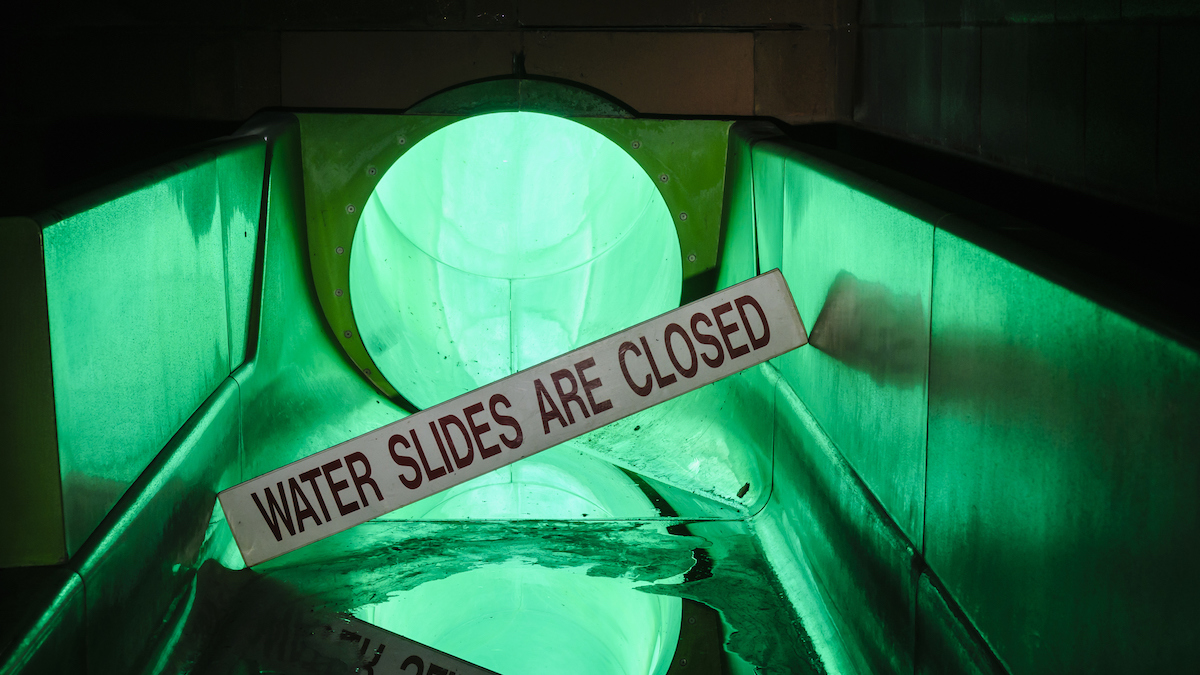Plans for a Waterpark at America’s Most Dangerous Lake Are Incredibly Tasteless

Plans for a waterpark to open in 2024 at Lake Lanier, known as America’s most dangerous lake, are underway and everyone who knows anything about the lake’s history is furious about it.
Lake Lanier, named after a confederate soldier, was constructed in Georgia’s Forysth County in 1956 by the U.S. Army—over the top of the once thriving Black town of Oscarville, whose inhabitants had been driven out through severe and sustained racial violence years earlier. Trigger warnings for discussion of severe, anti-Black racial violence and sexual violence below.
The ethnic cleansing began in 1912 when a young white woman from a nearby town was raped and murdered, and instead of actually investigating the crime properly, authorities scapegoated a group of young Black people from Oscarville instead. Not satisfied with the lynching of an innocent Black man and public hanging of two innocent Black teenagers, so-called Night Riders began to terrorize Oscarville’s inhabitants, burning their homes, killing their animals, and murdering families who refused to leave. Some of the inhabitants were able to sell their land, though for only a fraction of its real cost, whereas others had their land seized by local white individuals through a variety of legal and less legal means over the years.
Within two months of the Night Riders beginning their activities, the town, whose population had marked 1,098 during the 1910 census, was almost empty. Forsyth County remained one of the most mono-racial, and violently racist, parts of the south after that, and is only now seeing significant demographic, and ideological, changes.
When the U.S. army came in to build Lake Lanier, the 700 families who lived in the area were forcibly relocated, receiving compensation for the loss of their land and homes. The owners of so-called “abandoned” land and buildings, however, some of them descendants of former residents of Oscarville, received nothing at all.
It should go without saying that flooding the remains of a town depopulated through racist violence and naming the result after a Confederate soldier is monstrously disrespectful, but to make matters worse, only some of the 20 cemeteries in the area were moved before flooding commenced; the others were left to be engulfed by the waters. Ironically, it’s this act of disrespect, along with the decision to leave any buildings below 35 feet intact (on the grounds that only buildings taller than 35 feet would pose a safety hazard) that have contributed to the intensely dangerous nature of Lake Lanier. Swimmers have drowned after getting tangled in the ruins at the bottom of the lake, debris that is believed to include human remains from the lost graves. Sinking water levels due to drought and climate change have also caused an increasing number of boating accidents, as the tops of building below 35 feet are now closer to the surface of the lake and able to damage the bottoms of boats as they attempt to sail over them.
Because we put our guilt in ghost stories, the lake is naturally believed to be haunted, both by the wronged population of Oscarville and the staggering number of drowning victims the lake has claimed over the years. Over 700 people have died in Lake Lanier, 200 of them in the last thirty years, and those are just the known victims. As the lake doesn’t always give up its bodies, it’s possible other victims have gone unnoticed. One of the local rescue diving organizations is actually no longer willing to send human dive teams down into the lake, insisting on only using robots from now on due to the danger the debris poses. It’s important to note here that the lake was never intended to be used for recreational purposes, and was instead created to provide water and power to the rest of the Georgia—and that the U.S. Army Corps of engineers actively wants to discourage visitors engaging in riskier behaviors like underwater urban exploration, because of the fatality risk.
But hey, let’s build a water park there instead! Because who’s to let respect for human life, and the atrocities of the past, get in the way of capitalism, amirite?
The new Fins Up Waterpark, part of the existing Margaritaville Islands resort already built around Lake Lanier, will apparently include the first waterslide coaster in Georgia. Described as a “thrilling waterslide coaster spanning 418 feet,” which “features the most significant drop of its kind in the U.S.,” this ride is the centerpiece of the resort’s newest development, with apparently no thought at all into the optics of building an “adrenaline fueled” waterslide into a lake that regularly drowns people. There’s something deeply disquieting about Lake Lanier being used as a pleasure resort in the first place, and this latest themepark-ification of the place just exacerbates it. It’s such a bold example of the ways we try to paper over the horrors of the past instead of taking accountability for them, using consumerism to distract people who likely already wanted to be distracted.
(featured image: Stephen Barnes/Getty Images)
Have a tip we should know? [email protected]
